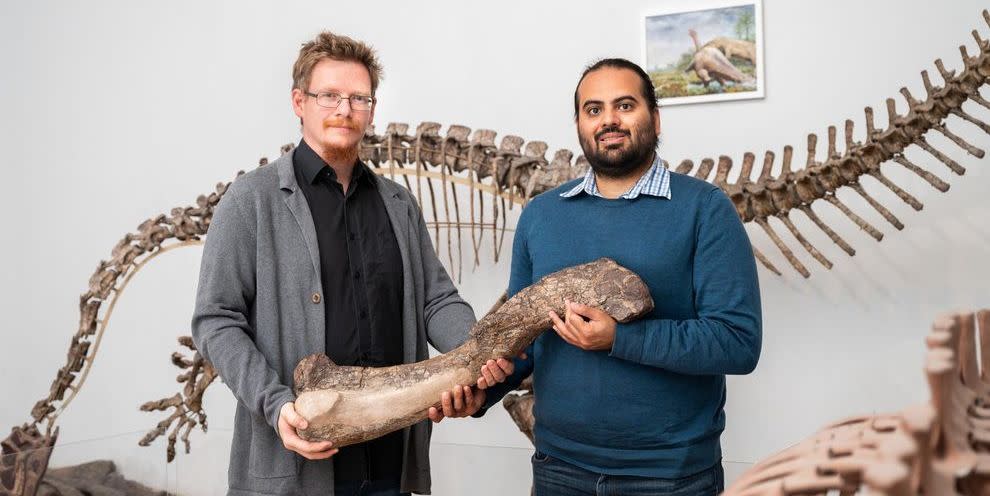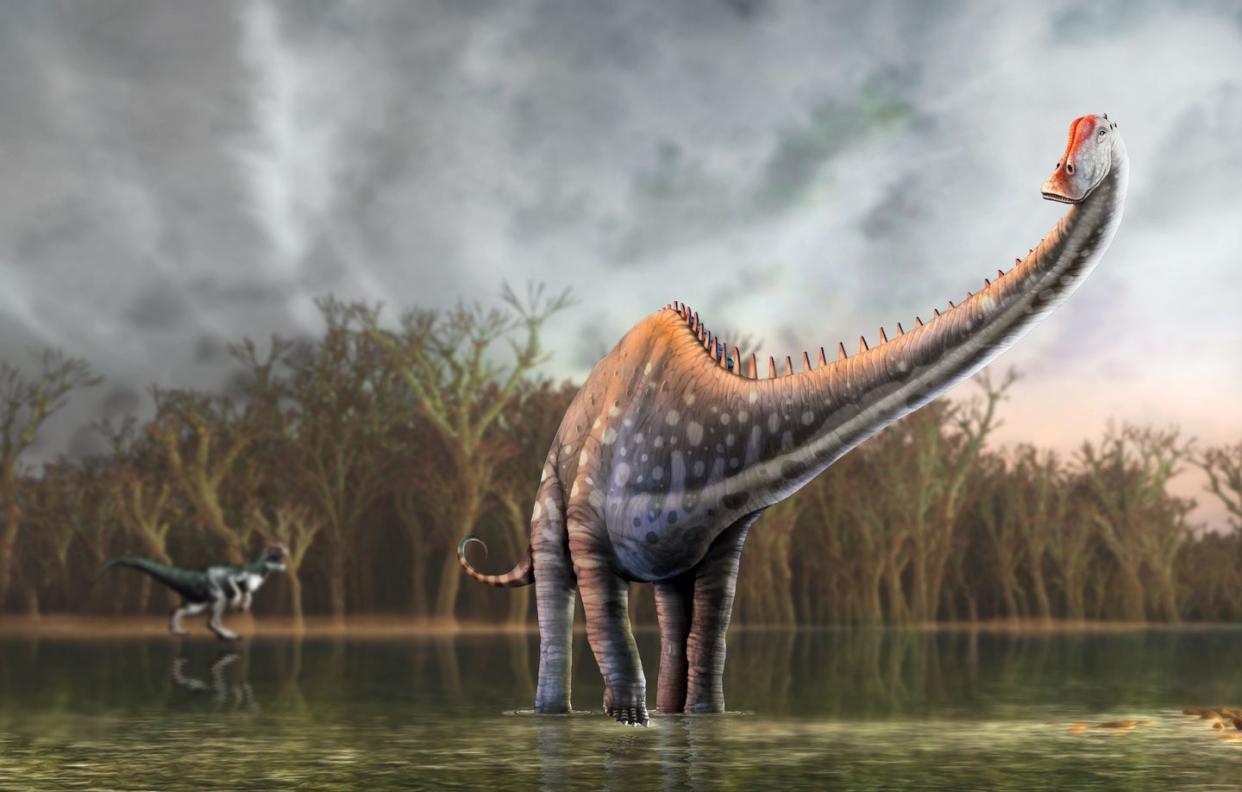A New Kind of Dinosaur is Discovered in Germany — Introducing the Tuebingosaurus

Paleontologists at the University of Tüblingen reexamine stored dinosaur bones to discover new species.
The new species resembles the long-necked sauropods.
The reanalyzed skeleton comes from a 1922 discovery that was improperly classified.
A dinosaur skeleton discovered in 1922 and stored in Germany was long thought to be a Plateosauridae. Now a group of paleontologists at the University of Tübingen’s Senckenberg Centre for Human Evolution and Paleoenvironment have overturned that belief. On a hunch that the original identification was incorrect, the team reexamined the bones and discovered a completely new genus and species of dinosaur. The findings were published September 8 in Vertebrate Zoology.
🦕 You love dinos. So do we. Let’s nerd out over them together—join Pop Mech Pro.
The newly named Tuebingosaurus maierfritzorum lived between 203 to 211 million years ago in the mountainous Swabian Alb region of southwest Germany, researchers say. This herbivore dinosaur resembles long-necked sauropods and has been wrongly categorized for decades.
University of Tübingen has a wealth of dinosaur bones in storage, with most of the fossils found since the 19th century classified as Plateosaurus. It’s undisputed that this group of dinosaurs was common in parts of Europe about 200 million years ago, the researchers say. However, it is also commonly accepted that taxonomical classification in the past was often inaccurate, with some discoveries attributed too hastily to the Plateosaurus genus.
Knowing this, Omar Rafael Regalado Fernandez and Ingmar Werneburg stepped in to reanalyze the 1922-discovered skeleton from Trossingen, mainly consisting of the rear of the dinosaur body. The team established that many of the bones were not the same as a typical Plateosaurus. For instance, the partial skeleton displayed (among other derived characteristics) is broader and has more strongly built hips, as well as fused sacral vertebrae and unusually large and robust long bones. These features imply locomotion on four legs. “This is unlike the Plateosauridae, which although resembling the long-necked sauropods from the Jura region, likely moved only on two legs,” the pair shares in a news release.

During their recategorizing efforts, the two paleontologists “established that they had discovered a previously unknown species and genus.” They call it “highly probable that Teubingosaurus maierfritzorum was a quadruped and accordingly far more closely related to the later large sauropods such as Brachiosaurus or Diplodocus than with the Plateosauridae,” according to the release. The new discovery shows that European dinosaurs were more diverse than previously thought, the Tübingen scientists believe.
The team bestowed the genus name Tuebingosaurus in homage to the university city and named the species maierfritzorum as a tribute to two German zoologists, Wolfgang Maier and Uwe Fritz. Separate bones kept only in storage have found new life on public display in Tübingen’s paleontological collection.
You Might Also Like
